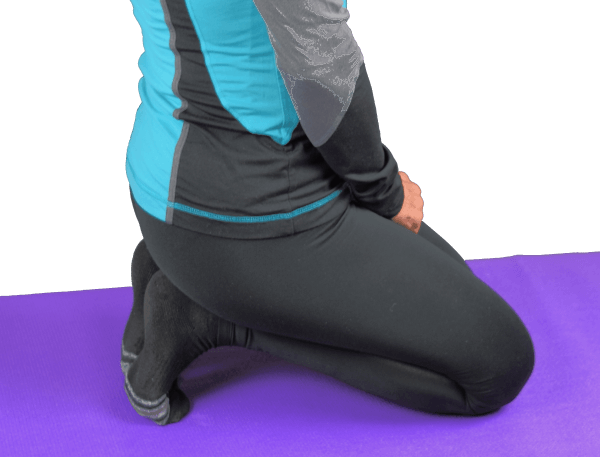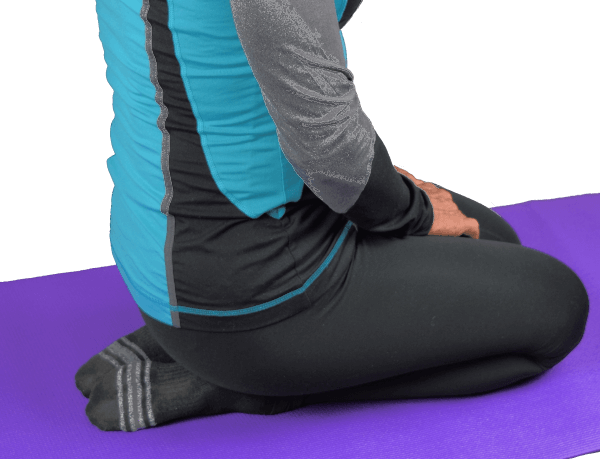Shin Splints, Overuse Injuries, and the Wrong Shoes
A high school cross country coach shares tips for preventing and recovering from common running injuries

Like many people in the running community, high school cross country coach and Ice Sleeve co-founder Sharlene Caldwell has seen a lot of injuries. From rolling ankles on her own runs to repetitive strain injuries in her student athletes – she knows that getting sidelined can be frustrating at any age.
A Stanford University study found that over half of high school athletes participating in track and cross country will experience an overuse injury during the season, and female runners are even more prone to risk.
As her school’s strength and conditioning coach, shin splints are the most common running injury Caldwell sees in young athletes. She’s on a mission to help her team – and athletes of all ages – to stay sound, and recover more quickly when they do encounter setbacks.
Running Form & Proper Footwear
Starting with the correct shoe is the first step in preventing running injuries, says Caldwell. She notes that parents and students will often walk into a department store and pick out a shoe based on looks without taking the individual’s running mechanics into consideration.
While there are many schools of thought on whether heel striking, overstriding, pronating, or supinating are actually the sources of running injuries, one thing is for certain. Running shoes, like training regimens, are not one size fits all.
“When you go to a professional the first time, they can actually look at the mechanics in your foot and give you a shoe that’s going to support how you put your foot on the ground,” says Caldwell.
“A lot of runners don’t push through the foot, instead they just put their foot down, making the ankle really stiff. Every time that ankle is stiff, you don’t get to rest your shin and you keep your calf tight.”
Overly tight calves, she says, actually pull the connections away from the bone, and cause shin and lower leg pain. According to the Mayo Clinic, shin splints (medial tibial stress syndrome) occur frequently in “athletes who have recently intensified or changed their training routines.” Thus, something as benign as starting a new practice schedule after a summer off could actually contribute to injury rates in youth athletes.
Training and technique errors can also be a factor in repetitive strain injuries like tendonitis and stress fractures, the Mayo Clinic website points out. Naturally, addressing form issues is a personalized process, but Caldwell also offers up some universal techniques for preventing overuse injury.
Calf Stretching & Ankle Strengthening
For Caldwell’s cross country team, a well rounded training program involves strengthening and stretching the calf, ankle, and foot. “If we can just loosen up those calves, it will help the ankle be mobile, it will help the shin release,” she says. “And if you do the toe crushers – that’s a lot of ankle mobility.”
Toe crushers, as she calls them, are a kneeling stretch that alternates pressing the tops of the feet into the ground with sitting on your heels with the toes curled under. Paired with calf raises and squat hugs – heel raises with the chest on the thighs - her cross country team combats stiffness and overuse issues. 
However, simply going through the motions is not enough, she says. “It’s the range of motion in the exercises that’s important, not just the fact that you’re going up and down.” Remembering to stack the knee and ankle over the foot “like a ballerina” also engages the calf in strengthening and stabilizing joints, says Caldwell.
A foam roller is another simple, yet powerful tool for increasing calf and shin mobility. Caldwell recommends thinking about all the connections in your leg, when foam rolling. If you have a spot that’s really sensitive in the front, spend some time on a corresponding area on the back side of the calf. Chances are, you may find a knot or an area of extreme tension that’s causing the shin pain.
Taking another page out of the dancer book, Caldwell suggests doing bar work as well. Place the calf on a bar at the trigger point while pointing, flexing, and circling the ankle. “It helps the muscle move in the way that it normally moves,” she says, creating the solution within the motion.
Diagnosis & Recovery
Although they may come on gradually, and be hard to spot, listening to your body is the first step in recovering from overuse injuries. “In today’s world, I think we’re getting a little smarter about the old statement “No pain, no gain,” says Caldwell. “Sometimes pain is very bad for you, and sometimes it’s okay.”
“That’s what makes you the best doctor. You know what is good pain and what is bad pain.” She also reminds parents to keep an eye on their student athletes for changes in behavior. “If you see your child limping or favoring something - talk, communicate, that’s huge.”
Teens are often hesitant to discuss their pain for fear of looking “wimpy,” or simply because they don’t have enough experience yet. For a young runner, it can be hard to determine what kind of pain is acceptable, and what warrants medical attention. The Mayo Clinic suggests “most cases of shin splints can be treated with rest, ice and other self-care measures.”
Caldwell also advocates icing shin splints and repetitive strain injuries. “Ice is an athlete’s best friend because it reduces swelling, and it’s a healing process.” She recommends mobile icing when possible to keep the blood flowing and prevent joint stiffness.
Heating and compression are also tools in her sports medicine arsenal. When to heat and when to ice is an age old question that once again boils down to your personal preference. “They work together, and you just have to learn what works best for you,” says Caldwell. Generally, heat is for joint mobility, and ice is to reduce swelling, but she suggests taking stock of your own injuries, and using the heating and icing routine that brings you the most relief.
Whether it’s shin splints, stress fractures, or IT issues, listening to your body is the key to preventing and recovering from repetitive strain injuries. “My athletes are their best doctor,” she says. “You know where your pain is.”


